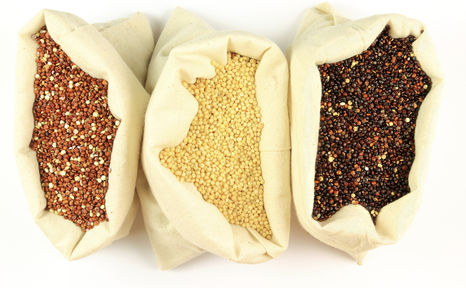

Fiber-rich grains that help combat inflammation.

Fiber-rich grains have long been credited with being able to help curb hunger (to fight obesity) and control blood sugar to combat diabetes. Multiple studies have shown eating fiber-rich foods lead to feeling fuller longer. And many of those foods contain ancient grains like quinoa, Kamut and millet. But in addition to helping maintain an hourglass figure, that’s free of love handles, these grains are also thought to be able to combat the inflammation that increases pain experienced by those living with rheumatoid arthritis (RA).
Nathan Wei, MD, a board-certified rheumatologist with more than 30 years of practice and clinical research experience, says interestingly, grains have had both bad as well as good PR.
“In 2000, a study said grains and legumes could make rheumatoid arthritis worse. The connection was their lectins, compounds thought to increase inflammation,” says Wei.
However, in recent years, studies have taken a closer look at grains, and concluded they’re not all bad. “Whole grains’ outside shell or hull that seems to make a difference,” says Weir. “That outside part contains various minerals, vitamins, and phytochemicals that might reduce inflammation.” And eating whole grains is thought to provide the body with fiber to more rapidly help remove toxins from the intestines and nutrients that enhance the immune system and reduce inflammation.
The lack of gluten may also make a difference.
Wheat and wheat gluten are known to trigger digestive troubles and have been linked to increased arthritis symptoms like pain and stiffness in joints caused by inflammation. But whole grains, thought of as excellent replacements for wheat, are available in many varieties.
Oats, rye, barley, buckwheat, millet and the ancient grains consisting of amaranth and quinoa are all healthy substitutes for wheat and options experts say may help ease inflammation associated with RA.
“There is no hard and fast rule as to how much one should ingest on a daily basis,” says Wei. But talking to a rheumatologist or following the recommendations for grains outlined by the U.S.D.A. can help you determine how much is best to maintain a healthy lifestyle.
To learn more on this topic:
Treating Osteoarthritis Naturally
Diet Changes to Improve Arthritis
Five Foods to Fight Osteoarthritis
Copyright © www.orthopaedics.win Bone Health All Rights Reserved